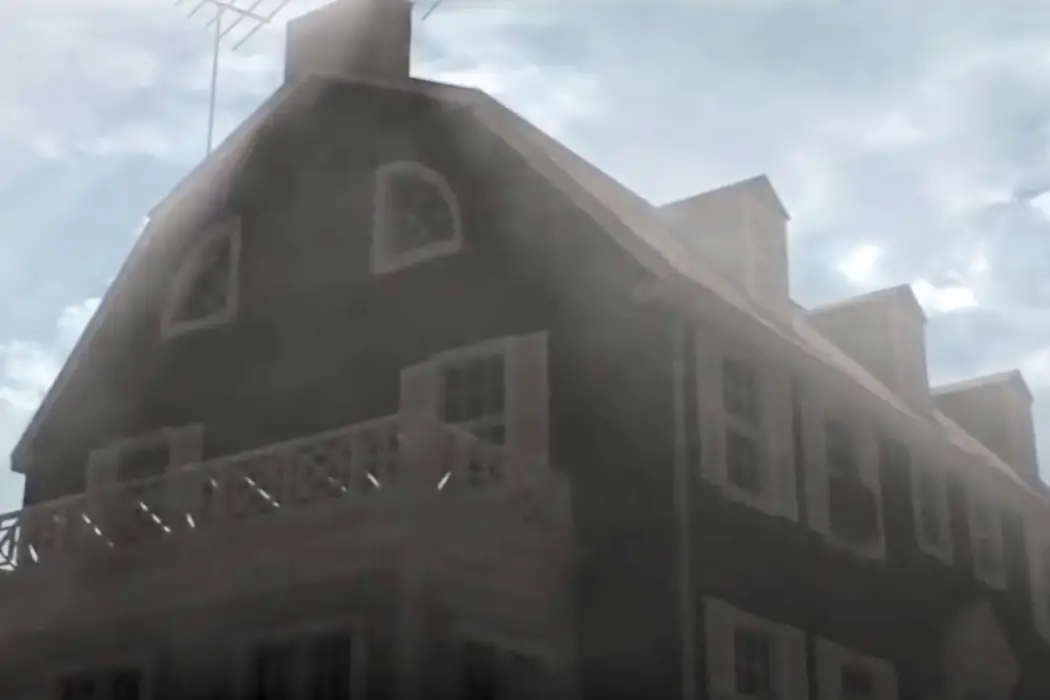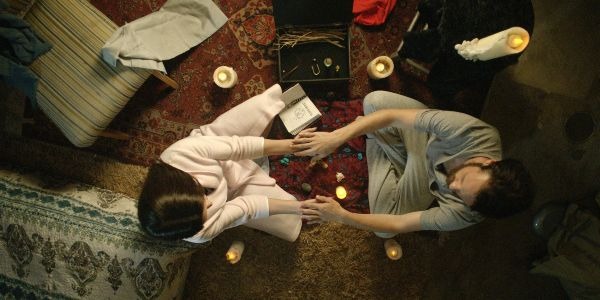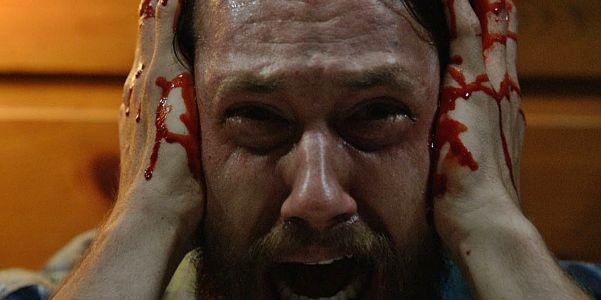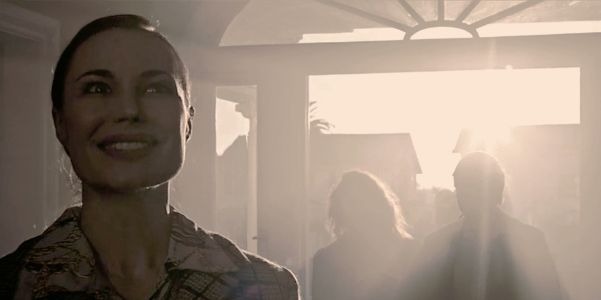THE AMITYVILLE MURDERS: A Supernatural, Tasteless Snoozefest

I'm a geeky, yet lovable film fan who adores horror…
I was 14 when The Amityville Horror, starring one Ryan Reynolds came out. It became the introduction to all things Amityville and it only took me a couple of years to discover the original The Amityville Horror and James Brolin with that sexy, shaggy beard. Both adaptations are about the infamous Lutz family, who move into the house only to be haunted by its past and possible supernatural forces that manifest strangely at 3.15am.
The Amityville haunting and the films that depicted it became one of the most definitive horror stories of my adolescence. Based on true events, they held a much more exciting, terrifying quality to them because of the idea that maybe the monsters under my bed were indeed real.
You’ve got to give it up for writer-director Daniel Farrands for trying to bring the DeFeo story on screen. We all know about the DeFeos, they feature in pretty much all Amityville films; they’re the people who died in that house, they made the house evil. Ronny DeFeo shot his entire family in their beds with a shotgun and later claimed voices inside him told him to do. On the surface, it seems like the more compelling story to tell: a son driven mad and to murder by voices inside his head, but Farrands’ film proves why filmmakers have been right to choose the Lutz story over this one.
At The Beginning, There Was Just A House And A Family
The story begins at a birthday party for the newly 18-year-old Dawn who shares a close bond with her older brother Ronny. The family is big and there are several siblings, none of whom are awarded any screen time or personality; they’re all cannon fodder, so to speak. Ronny, through actor John Robinson, emits a strange and unsettling vibe from the start. His old man hates him and he seems uncomfortable in his own lanky and lean body. It’s not long until things start going wrong and shadow-y monsters appear to Ronny. We all know how this will end and it isn’t good.

The Amityville house has always been in the centre of everything in the previous adaptations of the hauntings. It’s the house that’s evil, not the people; the evil simply bleeds into the people inside the house and turns them into monsters. Farrands is too focused on putting this family through a nightmare to remember that it’s the house that the audiences are drawn to. Farrands manages to give the house a looming feel, framing it so as if the people inside it are a bit too small for it, but the director is too busy introducing the mafia to the plot to truly drive the story properly.
For a horror film, not much happens. The film is dull and lifeless, and there is very little to hold your attention. There are plenty of cheap jump scares that equate to nothing, as if any loud scare will work as a jump scare, regardless of the context. The DeFeos are one of the most unpleasant families ever represented on the silver screen. Apart from Dawn, every member of the family is either rude, cruel, selfish or all of the above. And while I love a good bad character, if they’re not at least engaging, you’re screwed. It takes skill to craft characters who are flawed, but who you still root for and mourn their loss. No such thing happens here in The Amityville Murders.

It’s never explored what truly drove Ronny to kill his family. The film has some great, truly terrifying imagery featuring the spirits. They look like they are constructed out of your nightmares, creatures that simultaneously exist and don’t, made out of the shadows of both your mind and the dark corners of 112 Ocean Avenue. By assuming that there was a supernatural element, Farrands kills his film.
A better, more experienced and nuanced director would have opened up a dialogue about what those creatures and voices that Ronny insisted made him do it, truly represented. Some sloppy, lazy connections are made between Ronny’s drug using and his violent father. One particularly awful scene depicts Ronny Sr. attacking poor Dawn and forcing her male friends on her. The friends escape while Ronny Sr. grabs Dawn again, but Ronny appears with a shotgun which he presses on his father’s neck. It’s a difficult scene to watch but one that seems to think it’s more meaningful than it ends up being. A crappy, violent dad doesn’t quite explain the killing of a whole family.
Let’s Talk About Death
The most unforgivable part of Farrands’ film comes after the massacre. A bizarre scene where some mob money changes hands, followed by what I assume are actual crime scene photos of the brutally murdered family. I thought I was okay with violence, even the most graphic violence. I’m also very young, don’t have children or a particularly strong urge to have children, but to see these innocent, very real children lying lifeless, face down in their beds, covered in blood, made my stomach turn inside out. It’s hard to imagine why Farrands would insist on including such strong, horrible imagery in his otherwise tame and poor film.
Having already witnessed the fictionalised massacre, which is also difficult to watch, is Farrands trying to challenge us? Or perhaps test us? Is the question can we stand to watch these images or should we even watch them? How do they make us feel, if anything at all? Horror films thrive on the spectacle of violence, they allow us to experience terrifying situations in the comfort of our own home or collectively at the local cinema. The most extreme violence tries to get a bodily reaction out of the viewer; how much blood and guts can you take before you have to run to the toilet to be sick? Eli Roth is all for this, he actively challenges the viewer to withstand more and more sadistic torture, violence and cruelty, just to see how far he can push it.

What about when the violence is real? Whether or not you believe in what happened to the Lutz family was due to supernatural forces or that the Amityville house was cursed, the DeFeo massacre was very much a real one. The difference between adapting the Lutz story and the DeFeo story is that the real Lutz family escaped, they lived to tell the tale. Ronny DeFeo killed his younger siblings with a shotgun powerful enough to tear through their still-growing bodies with horrendous force. It’s a terrible crime to commit, but it happened, so should it be recreated on screen? Can we learn something from it or are we just fetishizing such a heinous crime for the sake of our own entertainment?
The Amityville Murders: How Bad Is It Exactly?
The Amityville Murders is a film that should be avoided at all costs. It doesn’t succeed as a horror film, nor as a supernatural thriller. What could have been an exciting entry into the Amityville saga turns out to be a tasteless piece of mildly supernatural fecal matter.
The film’s worst crime might be just how dull it is. If you insist on covering such a heinous act of violence, why not just go out with a bang and craft at least a truly terrifying, spine-tingling and/or vomit-inducing horror film that will be remembered, for better or for worse? Unfortunately, The Amityville Murders will be forgotten and probably for its own good.
What’s your favourite Amityville film? Should we make films about true stories featuring such extreme violence? Let us know your views in the comments!
The Amityville Murders was released in the U.S. on February 8, 2019.
Does content like this matter to you?
Become a Member and support film journalism. Unlock access to all of Film Inquiry`s great articles. Join a community of like-minded readers who are passionate about cinema - get access to our private members Network, give back to independent filmmakers, and more.
I'm a geeky, yet lovable film fan who adores horror cinema, musicals and my dog Geordie La Forge. I'm from Finland, but based in London.













